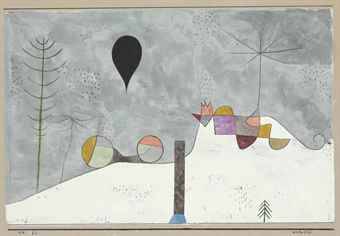Cult of Beauty - Religion of Wisdom - Musings from the Bay Area Jessie Zechnowitz
Don't wanna be here? Send us removal request.
Photo

Oliver Mundy tarot
63 notes
·
View notes
Photo

“Growth of the Night Plants”, 1922, Paul Klee.
1K notes
·
View notes
Photo

Karl Isakson (Swedish, 1878 - 1922) Reclining Model
25 notes
·
View notes
Photo

Giorgio de Chirico (1888 – 1978) - Self-portrait, 1951
47 notes
·
View notes
Photo

The Kingdom of Yam certainly existed as a trading partner and possible rival of Old Kingdom Egypt, yet its precise location has never been determined. (Kingdoms like Egypt with written records get so much unfair attention.) Based on the funerary inscriptions of the Egyptian explorer Harkhuf, it seems Yam was a land of “incense, ebony, leopard skins, elephant tusks, and boomerangs.“ Until recently, it was believed that the Egyptians did not know how to cross the vast and arid Sahara. But hieroglyphs recently discovered over 700 kilometers (430 miles) southwest of the Nile confirm the existence of trade between Yam and Egypt and point to Yam’s location in the northern highlands of Chad.
880 notes
·
View notes
Photo

Paul Klee Portrait of an Equilibrist 1927
183 notes
·
View notes
Photo

Paul Klee, Flower myth, 1918. Oil on canvas. Collection Dr. Bernhard Sprengel. Via WikiPaintings.
319 notes
·
View notes
Photo

Ad Marginem painting by Paul Klee
32 notes
·
View notes
Photo

Paul Klee
66 notes
·
View notes
Photo

Paul Klee, Winterbild, 1930
watercolor, gouache, pen & black ink, silver foil collage
13 notes
·
View notes
Photo

Paul Klee (1879–1940), Wall Plant (Mauerpflanze), 1922
23 notes
·
View notes
Photo

Paul Klee, Glance of a Landscape
19 notes
·
View notes
Photo

colored pencil and pastel on paper
ballerina
17 notes
·
View notes
Text
Forrest Bess: Middlesex

Drawings, 1957
Among the giants (Rothko, Still, and Pollock) represented by the Betty Parsons gallery in the 50’s and 60’s, there roamed the small but potent work of an artist named Forrest Bess. He hailed from Bay City, Texas, a bait fisherman and oil rig roughneck by day, and a conduit for the visualization of eternal truths by night.
Parsons heard his name through the grapevine, and when she came to Texas, she ate him up with her silver spoon. Parsons mounted no less than six solo exhibits of Bess’s work, and introduced the artist to Meyer Schapiro, with whom he began a lasting correspondence.
Bess has been compared with Miró, because of a biomorphic bent and a use of black as an elemental nothingness, from which chromosomal life springs forth. Schapiro was especially partial to “his wonderful black, of many nuances: granular, matt [sic], shiny and rough.” These blacks are often used in counterbalance with white, although the exploration of opposites that Bess embarks upon is never hierarchical. Bess’s idea of opposites is that they attract and define one another in the most basal, semiotic way: they are each other. The balance struck in Before Man (1952) functions as a two-handed grip, fingers interlacing in a symmetry of color and form. The fusion of the antithetical is his raison d’être.

Before Man, 1952
Bess worked extensively on his “thesis,” a rambling document that fuses philosophy from Carl Jung, rituals from Australian aborigines, and transformative ideas from alchemy. Gender was the diametric relationship that concerned him most; and paintings like the one titled, The Hermaphrodite (1957) expose his fascination with a female/male composite body, as well as a craving to depict “primordial” form.
The Hermaphrodite, 1957
And then there is the matter of his self-surgery… that time he made an incision on the underside of his penis and expected a second penis to be released. That experiment caused some to view his work with the simultaneous mix of disgust and novelty that insane acts tend to spark. But Bess’s willingness to use his body for his science is proof of an otherworldly dedication to a transcendent self. His ability to commune with a vision beyond his own reality creates a vibration of instinctual sensitivity. We are all two, we are all one.

The Penetrator, 1967
text by, Jessie Zechnowitz
#Forrest Bess#Modern Painting#Modern Art#Art History#Modernism#Biomorphism#Symbolism#Berkeley Art Museum
7 notes
·
View notes
Link
Once a label is attached to an artist, it becomes difficult, if not impossible to see past these particular labels. In case of the painter Forrest Bess, it is the term “visionary” that has been used ever since Bess referred to himself as “visionary painter” in a letter to art historian Meyer...
39 notes
·
View notes
Photo

Hercules fighting a dragon in the Garden of the Hesperides from a tapestry by Willem Dermoyen, 1528
2K notes
·
View notes
